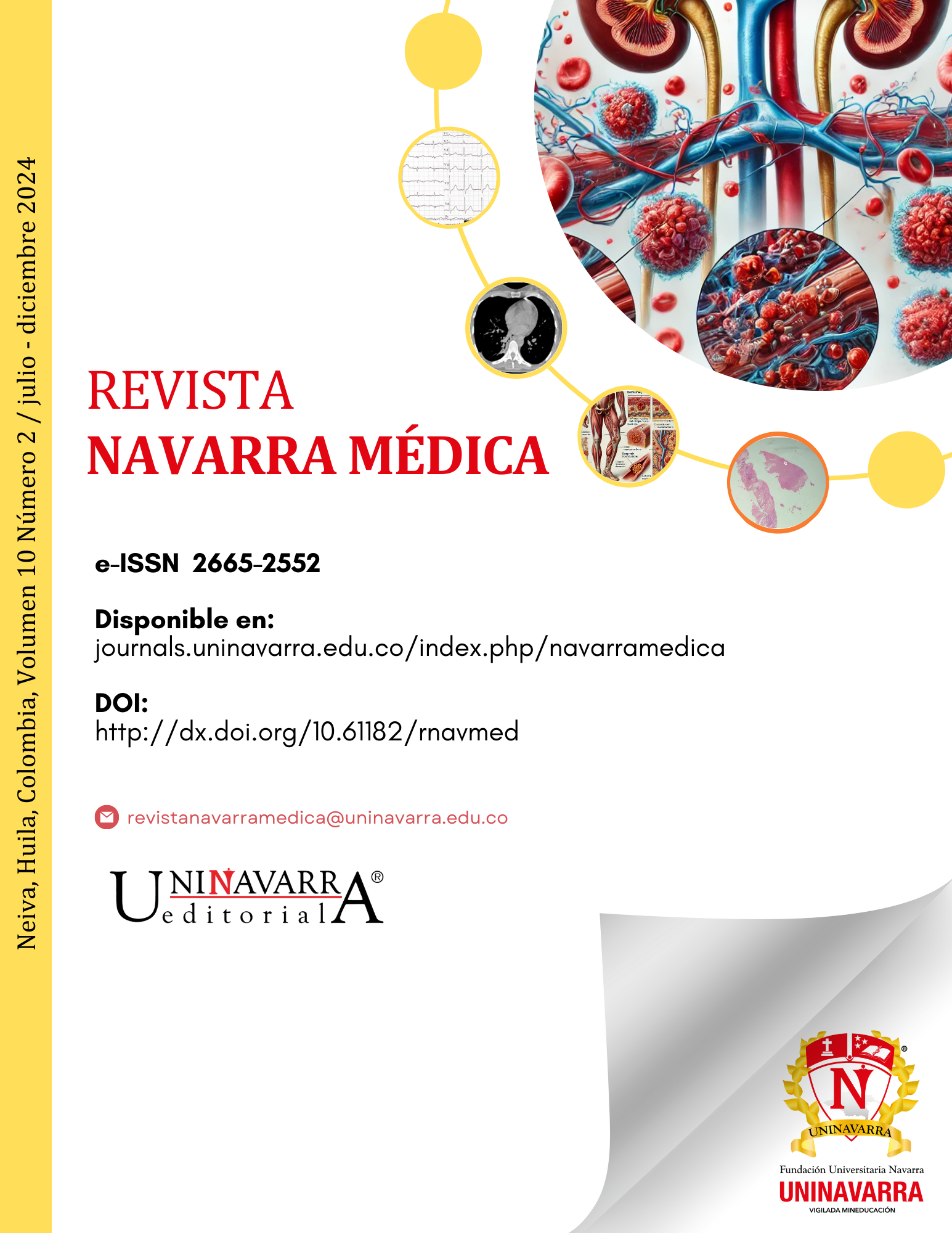Immune-mediated microangiopathy manifestations mediated by complement in a patient with antiphospholipid syndrome. Case report
DOI:
https://doi.org/10.61182/rnavmed.v10n2a6Keywords:
Antiphospholipid Syndrome, Thrombotic Microangiopathies, Complement System Proteins, Intraparenchymal HemorrhageAbstract
A case report is presented from a hospital in the city of Bogota, Colombia, on a 21-year-old patient with multiple early gestational losses associated with high blood pressure that was difficult to manage and required monitoring in the intensive care unit. Subsequently, she presented neurological deterioration due to intraparenchymal hemorrhages, being considered a possible thrombotic etiology secondary to antiphospholipid syndrome. In this report, we compile the diagnostic criteria for antiphospholipid syndrome and the factors that could explain the clinical events presented, which represent a challenge in medical practice.
References
(1) Delves, J. Sistema del complemento. MSD Manual, professional version, 2021. Disponible en:
(2) Ortiz, G. et al. Microangiopatía trombótica (MAT) en la unidad de cuidado intensivo. Aproximación a la trombocitopenia asociada a disfunción orgánica. Serie de casos clínicos. Acta Colombiana de Cuidado Intensivo. 2020. Disponible en: https://doi.org/10.1016/j.acci.2020.06.004
(3) Caliz, R. Díaz del Campo Fontecha, P. Et al. Recomendaciones de la sociedad Española de Reumatología sobre el síndrome antifosfolípido primario. Reumatología Clínica, Sociedad Española de Reumatología y Colegio Mexicano de Reumatología. 2020; 16:71-86. Disponible en: https://www.reumatologiaclinica.org/es-recomendaciones-sociedad-espanola-reumatologia-sobre-articulo-S1699258X18302547
(4) Moake, J. Antiphospholipid antibody syndrome (APS). MSD Manual, professional version, 2021. Disponible en: https://www.msdmanuals.com/es-co/professional/hematolog%C3%ADa-y-oncolog%C3%ADa/trastornos-tromb%C3%B3ticos/s%C3%ADndrome-de-anticuerpos-antifosfol%C3%ADpidos-saf
(5) Barbhaiya M, Zuily S, et al. 2023 ACR/EULAR antiphospholipid syndrome classification criteria. Ann Rheum Dis. 2023;82(10):1258-1270. Disponible en: https://ard.bmj.com/content/82/10/1258.info
(6) Knight J, Kanthi Y. Mechanisms of immunothrombosis and vasculopathy in antiphospholipid syndrome. Semin Immunopathol. 2022;44:347–362. Disponible en: https://doi.org/10.1007/s00281-022-00916-w
(7) García D, Erkan D. Diagnosis and management of the antiphospholipid syndrome. N Engl J Med. 2018;378:2010–2021. Disponible en: https://www.nejm.org/doi/10.1056/NEJMra1705454
(8) Rodríguez V, Consani S. Manifestaciones clínicas “no criterio” del síndrome antifosfolipídico: presentación de una cohorte nacional. Rev Urug Med Interna. 2023;8:26–37. Disponible en: https://revistamedicinainterna.uy/index.php/smiu/article/view/201
(9) Cervera R, Piette JC, et al. Antiphospholipid syndrome: clinical and immunologic manifestations and patterns of disease expression in a cohort of 1,000 patients. Arthritis Rheum. 2002;46(4):1019–1027. Disponible en: https://pubmed.ncbi.nlm.nih.gov/11953980/
(10) Alijotas-Reig J. Sistema del complemento como pieza clave en la patogenia del síndrome antifosfolipídico obstétrico. Med Clin (Barc). 2010;134(1):30–34. Disponible en: https://www.elsevier.es/es-revista-medicina-clinica-2-articulo-sistema-del-complemento-como-pieza-S0025775309010148
(11) Contreras E, de la Rubia J, et al. Guía diagnóstica y terapéutica de las microangiopatías trombóticas del Grupo Español de Aféresis. Med Clin (Barc). 2015;144(7):331. Disponible en: https://www.elsevier.es/es-revista-medicina-clinica-2-articulo-guia-diagnostica-terapeutica-microangiopatias-tromboticas-S0025775314007362
(12) Cañete M, Gonzales S. Enfermedad tiroidea autoinmune, CTLA-4 y CD28. Bioquímica y Patología Clínica. 2010;74:25-29. Disponible en: https://www.redalyc.org/pdf/651/65121041004.pdf
Downloads
Published
Issue
Section
License
Copyright (c) 2024 Aníbal Cortés-Bravo, Carlos Hernán Calderón Franco

This work is licensed under a Creative Commons Attribution-NonCommercial 4.0 International License.








